Have you ever wondered what makes Mexico such a vibrant and captivating tourist destination? Well, let me tell you, there’s so much to discover beyond the beautiful beaches, ancient ruins, and delicious cuisine. One of the most exhilarating experiences you can have while visiting Mexico is witnessing the thrilling bullfighting tradition. In this article, we will explore the fascinating world of bullfighting in Mexico and give you an insider’s guide to enjoy this unique and adrenaline-pumping spectacle.
Bullfighting has a long and storied history in Mexico, dating back to the Spanish colonial period. It is not just a sport but a cherished tradition deeply rooted in the country’s culture. Whether you are a fan of bullfighting or simply curious to learn more, attending a bullfight in Mexico is a truly unforgettable experience. As a spectator, you will be mesmerized by the elaborate rituals, the bravery of the matadores, and the majestic power of the bulls. So, if you’re planning a trip to Mexico and want to immerse yourself in its rich cultural heritage, don’t miss the chance to witness a bullfight. In the upcoming sections, we will provide you with all the information you need to know, from the best places to watch a bullfight to the essential dos and don’ts. So stay tuned, and get ready to embark on a thrilling adventure into the world of Mexican bullfighting!
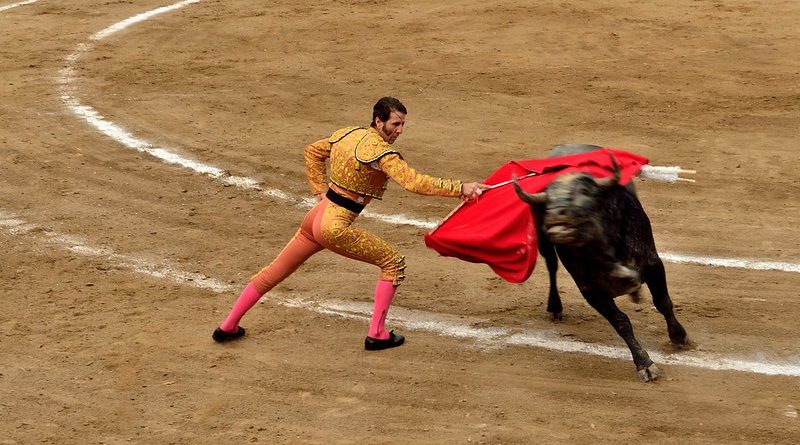
History of Bullfighting in Mexico
Origins of Bullfighting in Mexico
Bullfighting in Mexico has a rich history that dates back to the time of Spanish colonization. The sport originated in the Iberian Peninsula and was brought to Mexico by the Spanish conquistadors in the 16th century. It quickly gained popularity among the Mexican population and became deeply ingrained in the country’s culture.
Evolution of Bullfighting in Mexico
Over the years, bullfighting in Mexico has evolved and developed its own unique characteristics. It has been influenced by both Spanish traditions and pre-Hispanic Mexican rituals. Initially, the sport was predominantly practiced by Spanish settlers and the elite class. However, it gradually became more accessible to the general population and gained recognition as a national pastime.
Influence of Spanish Colonization
The Spanish colonization played a significant role in shaping the bullfighting tradition in Mexico. The conquistadors brought with them the customs and rituals of bullfighting, which were deeply rooted in Spanish culture. As a result of this influence, bullfighting became a part of the Mexican identity and an integral aspect of the cultural exchange between Spain and Mexico.
Important Bullfighting Venues in Mexico
Plaza Mexico
Plaza Mexico, located in Mexico City, is one of the most iconic bullfighting arenas in the world. With a seating capacity of over 40,000, it is also the largest bullring in the world. The arena has witnessed countless memorable bullfights and has hosted some of the greatest bullfighters in history.
Plaza de Toros Nuevo Progreso
Situated in Guadalajara, Plaza de Toros Nuevo Progreso is another prominent venue for bullfighting in Mexico. Known for its lively atmosphere and passionate fans, this arena has become a favorite among both local and international bullfighters.
Plaza de Toros Monumental
In the city of Aguascalientes, Plaza de Toros Monumental stands as a testament to the enduring tradition of bullfighting in Mexico. With its impressive architecture and central location, it attracts a large number of spectators during the bullfighting season.
Plaza de Toros San Marcos
Located in Aguascalientes, Plaza de Toros San Marcos is renowned for hosting the Feria Nacional de San Marcos, one of the most important bullfighting festivals in Mexico. This historic arena has a capacity of over 16,000 and holds a special place in the hearts of bullfighting enthusiasts.
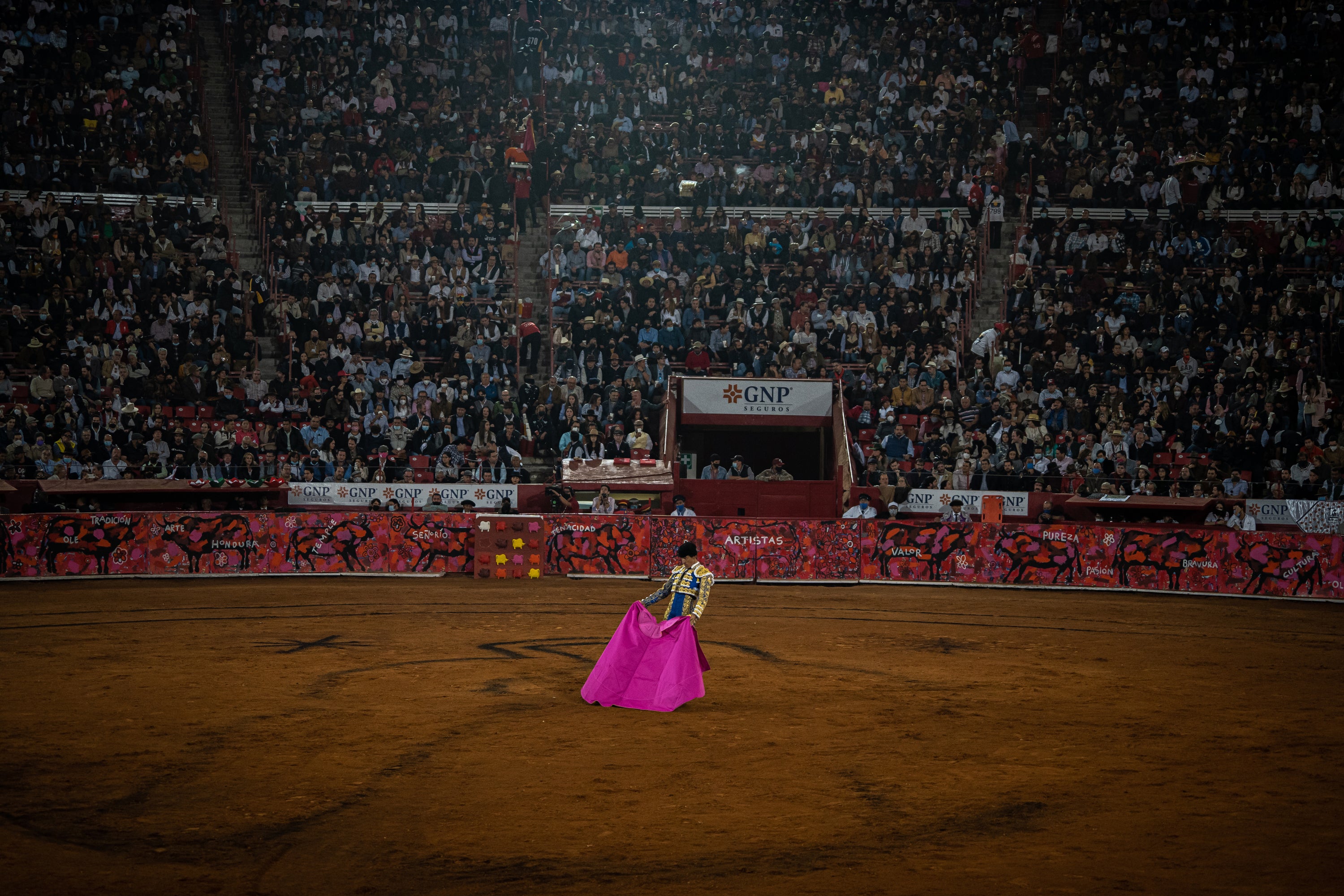
Understanding the Bullfighting Ritual
Role of the Matador
The matador, also known as the bullfighter, is the main protagonist in a bullfight. Clad in a traditional costume known as the traje de luces, the matador displays skill, bravery, and artistry in his interactions with the bull during the different stages of the fight.
The Picadores and their Role
The picadores are mounted horsemen armed with lances. Their role is to weaken the bull by inflicting lances on its back, thus preparing it for the final stage of the bullfight. This phase requires great precision and control to ensure a fair and challenging fight.
The Bandilleros and their Contribution
The bandilleros are responsible for placing banderillas, colorful barbed sticks, on the back of the bull. This action serves to further weaken the bull and provide an opportunity for the matador to demonstrate his agility and bravery.
The Toro Bravo: The Star of the Show
The toro bravo, or brave bull, is the true star of the bullfight. Bred specifically for their strength and aggression, these bulls face their fate in the arena with an indomitable spirit. Their raw power and unpredictability add an element of excitement to the spectacle.
Different Stages of a Bullfight
A bullfight is divided into three distinct stages, known as tercios. The first third, called tercio de varas, involves the picadores weakening the bull. The second third, tercio de banderillas, focuses on the bandilleros placing the barbed sticks on the bull’s back. The final third, tercio de muerte, is where the matador finally faces the bull alone, culminating in the kill.
Bullfighting Equipment and Attire
The Matador’s Costume
The matador’s costume, the traje de luces, is an elaborate and ornate outfit made of vibrant colors, intricate embroidery, and sequins. It symbolizes the matador’s status and serves as a tribute to the bullfighting tradition.
The Capote: A Matador’s Cape
The capote is a large cape used by the matador during the early stages of the bullfight. It allows the matador to showcase his artistry and control as he maneuvers the bull in intricate and graceful movements.
The Estoque: The Matador’s Sword
The estoque is the sword used by the matador to deliver the final blow to the bull during the tercio de muerte. This moment requires great skill and precision, as the matador must aim for a specific spot to ensure a quick and humane death for the bull.
The Muleta: The Red Cloth
The muleta, a smaller red cloth, is used by the matador in the final stage of the bullfight. It serves as a tool for the matador to provoke the bull and showcase his ability to maneuver in close quarters, creating thrilling and dramatic moments.
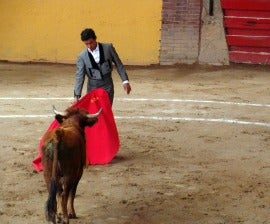
Bullfighting Terminology
Suerte: Essential Movements
Suerte refers to the essential movements and techniques employed by the matador and the bull during the fight. These suertes include the verónica, a graceful maneuver with the cape, and the pase, a series of passes with the muleta.
Tercio de Varas: The First Third
The tercio de varas is the first part of the bullfight, where the picadores weaken the bull by stabbing it with lances. This stage ensures that the bull is suitably prepared for the subsequent tercios.
Tercio de Banderillas: The Second Third
In the tercio de banderillas, the bandilleros place the banderillas on the bull’s back. This stage further tires and weakens the bull, making it more manageable for the matador.
Tercio de Muerte: The Final Third
The tercio de muerte is the culmination of the bullfight, where the matador faces the bull alone. This is the most dramatic and dangerous stage, as the matador attempts to deliver a clean and precise sword thrust to end the bull’s life.
Cuadrilla: The Matador’s Team
The cuadrilla is comprised of the matador’s team, including the bandilleros, picadores, and other assistants. They work together to ensure the smooth execution of the bullfight and provide support to the matador when needed.
Paseíllo: The Matadors’ Procession
Before the bullfight begins, the matadors and their cuadrillas participate in the paseíllo, a grand procession around the bullring. This ceremonial walk showcases the matadors’ costumes and prepares them for the thrilling spectacle that lies ahead.
Brindis: The Matador’s Dedication
During the bullfight, the matador often dedicates his performance to someone or something of significance. This dedication, known as the brindis, can be a heartfelt homage to a loved one or a symbolic gesture of gratitude towards the audience.
Famous Bullfighters of Mexico
Enrique Ponce
Enrique Ponce is one of Mexico’s most celebrated bullfighters. Known for his grace and technical prowess, he has achieved numerous triumphs throughout his career and has become an icon in the world of bullfighting.
Joselito Adame
Joselito Adame is a young and talented bullfighter who has achieved great success in the arena. His daring and charismatic performances have earned him a dedicated following and have solidified his place among Mexico’s bullfighting elite.
Eulalio López ‘Zotoluco’
Eulalio López, also known as Zotoluco, is a veteran bullfighter with decades of experience. Recognized for his showmanship and exceptional skill, he has left an indelible mark on the bullfighting tradition in Mexico.
El Juli
El Juli, a renowned Spanish bullfighter, has also made a significant impact on the Mexican bullfighting scene. His technical brilliance and intense style have captivated audiences around the world, making him a favorite among bullfighting enthusiasts.
Rodolfo Rodríguez ‘El Pana’
Rodolfo Rodríguez, better known as El Pana, was a beloved figure in Mexican bullfighting. He was known for his unconventional style and his ability to connect with the audience on a deeply emotional level. Although retired, his legacy lives on in the hearts of bullfighting aficionados.
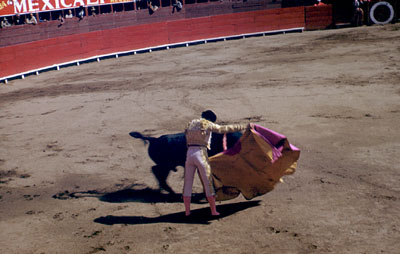
Controversies and Criticisms of Bullfighting
Animal Rights Activism
Bullfighting has long been a subject of debate and controversy due to its perceived cruelty towards animals. Animal rights activists argue that the sport is inherently cruel and goes against ethical standards of animal welfare.
Ethical Concerns
Many critics raise ethical concerns regarding the treatment and killing of bulls during bullfights. They argue that the suffering experienced by the bulls is unnecessary and unjustifiable, and that alternative forms of entertainment should be promoted.
Calls for Ban on Bullfighting
In recent years, there have been increasing calls for the banning of bullfighting in Mexico. Animal rights organizations and some segments of the population argue that the practice is outdated and inconsistent with modern values and societal norms.
Alternatives to Bullfighting
To address the concerns surrounding bullfighting, some regions in Mexico have introduced alternative forms of bull-related events. These include bull runs where bulls are released in the streets, but without the intention of killing or harming the animals.
Bullfighting Festivals and Events in Mexico
Feria Nacional de San Marcos
The Feria Nacional de San Marcos, held in Aguascalientes, is one of Mexico’s most important bullfighting festivals. It combines traditional bullfights with music, dance, and cultural events, attracting visitors from all over the world.
Corrida Goyesca de Ronda
Originating in Spain, the Corrida Goyesca de Ronda has now become a popular bullfighting event in Mexico. It pays homage to the renowned Spanish painter Francisco Goya and showcases the artistry and elegance of bullfighting.
Feria de San Miguel
The Feria de San Miguel, celebrated in the city of San Miguel de Allende, is another significant bullfighting event in Mexico. This festival combines bullfights, live music, traditional dances, and other cultural activities to create a vibrant and lively atmosphere.
Feria de León
In the city of León, the Feria de León incorporates bullfighting as an integral part of its annual celebration. This event attracts thousands of visitors who come to experience the thrill and excitement of the bullfighting tradition.
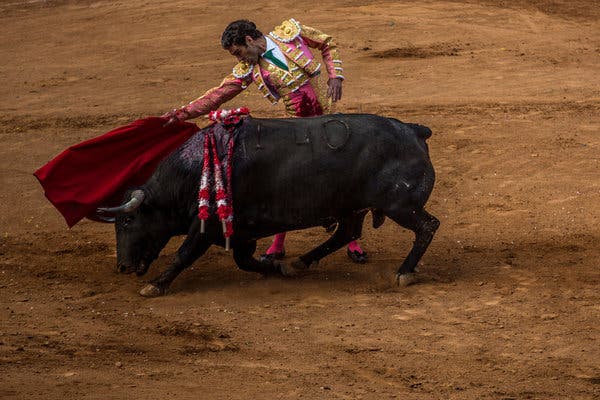
The Cultural Significance of Bullfighting
Symbolism and Tradition
Bullfighting holds deep symbolic significance in Mexican culture. It is seen as a metaphor for the struggles and challenges of life, representing the triumph of the human spirit over adversity.
Artistic Expression
Bullfighting is often considered a form of art, where matadors showcase their grace, skill, and bravery in a carefully choreographed performance. The intricate movements and precise techniques make it a captivating spectacle.
Spanish Influence on Mexican Culture
Bullfighting serves as a reminder of Mexico’s connection to its Spanish heritage. It is a testament to the enduring influence of Spanish culture, which continues to shape and enrich Mexican traditions.
Bullfighting as a Spectacle
Beyond its cultural significance, bullfighting is a highly anticipated and thrilling spectacle for both locals and tourists. The combination of danger, skill, and artistry creates an electrifying atmosphere that can only be truly experienced in person.
Bullfighting and Tourism in Mexico
Attraction for Travelers
Bullfighting has become a major draw for tourists visiting Mexico. Travelers interested in experiencing the country’s rich cultural traditions often seek out bullfighting events as a way to immerse themselves in Mexico’s vibrant heritage.
Impact on Local Economies
Bullfighting festivals and events have a significant economic impact on the regions hosting them. They attract large crowds of spectators, generating revenue for local businesses such as hotels, restaurants, and souvenir shops.
Bullfighting and Festivals
Bullfighting is often an integral part of larger cultural and religious festivals celebrated across Mexico. These festivals, such as the Feria Nacional de San Marcos, bring together various cultural activities and bullfighting, providing a unique and vibrant experience for both locals and tourists.
Promotion and Preservation of Bullfighting
Conservation Efforts
To ensure the continuation of the bullfighting tradition, efforts are being made to conserve and protect the bull breeds specifically bred for bullfighting. Conservation programs and breeding initiatives aim to maintain the purity and strength of these majestic animals.
Educational Initiatives
Educational initiatives have been implemented to promote a deeper understanding and appreciation of the bullfighting tradition. Museums, exhibitions, and workshops help educate the public about the history, symbolism, and techniques involved in bullfighting.
Promotion of Traditional Spectacles
Organizations and individuals dedicated to the preservation of bullfighting actively promote and organize events to showcase the tradition. They work to raise awareness and ensure the ongoing support of spectators, both within Mexico and internationally.
Cultural Heritage Recognition
Bullfighting has been recognized as an important part of Mexico’s cultural heritage. Efforts to safeguard and promote this tradition have led to its inclusion on lists of intangible cultural heritage, ensuring its preservation for future generations.
Bullfighting Safety and Animal Welfare
Vet Checks and Regulations
To ensure the well-being of the bulls, strict regulations and veterinary checks are in place before, during, and after bullfights. These measures ensure that the animals are in good health and are treated with the utmost care and respect.
Animal Welfare Measures
In response to concerns about animal welfare, there have been efforts to implement measures to minimize suffering during bullfights. These include strict rules regarding the treatment of bulls and the use of humane killing methods.
Safety Precautions for Matadors
Matadors are highly trained professionals who undergo rigorous training to ensure their safety in the arena. Safety precautions, such as physical fitness programs and strict adherence to safety protocols, are followed to minimize the risks associated with bullfighting.
The Future of Bullfighting in Mexico
Changes and Adaptations
The tradition of bullfighting in Mexico continues to evolve and adapt to the changing social and cultural landscape. Efforts are being made to address concerns surrounding animal welfare and ethical practices, ensuring that the tradition can persist while meeting modern sensibilities.
International Audience
Bullfighting in Mexico has garnered international attention and has become an attraction for tourists from around the world. The growing interest from an international audience provides new opportunities for the promotion and sustainability of the tradition.
Sustainability Challenges
The future of bullfighting in Mexico faces challenges in terms of sustainability and public support. Ongoing discussions and dialogue aim to strike a balance between preserving this cultural tradition and addressing the concerns raised by its detractors.
Legacy and Continuity
Despite the controversies and criticisms, the bullfighting tradition in Mexico continues to thrive, with new generations of matadors emerging and captivating audiences. The enduring passion and dedication of those involved in the sport ensure its legacy and continuity for years to come.
Conclusion
Thrilling Traditions Continue
Bullfighting in Mexico has a rich history and deep cultural significance. From its origins in Spanish colonization to its modern-day adaptations, the tradition of bullfighting continues to captivate audiences with its artistry, bravery, and symbolism. Whether seen as an enthralling spectacle or subject to ethical debates, bullfighting remains an enduring and thrilling tradition that is part of Mexico’s vibrant cultural fabric. So, immerse yourself in the world of bullfighting if you visit Mexico, and experience this thrilling tradition firsthand.